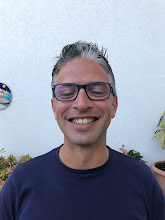- Released Internationally on 26/10/12
- Released in Malta by KRS on 10/04/13
Preview (first published 01/04/13 in VIDA Magazine)
The is definitely the release I’m most interested in this month. The film has all the makings of an epic, but was less-than-enthusiastically received across the Atlantic. It is the difficult adaptation of the multi-award winning novel from 2004 by David Mitchell (not the comedian). The book follows six separate stories which are eventually shown to be related to each other in various ways, despite being set in various corners of the globe and often many centuries apart.
This must have made it a bit of a nightmare to bring to the screen, but the task was undertaken by Lana and Andy Wachowski (The Matrix Trilogy) and Tom Tykwer (Perfume, Run Lola Run). Tykwer is one of those rare directors who also composes music for his films, and here he teamed up with Reinhold Heil and Johnny Klimek to compose what was undoubtedly one of the best and most beautiful film scores to come out of 2012.
The film also boasts a stellar cast, with Tom Hanks, Halle Berry, Hugh Grant, Jim Broadbent, Hugo Weaving and Susan Sarandon, amongst others, portraying multiple roles in the various story segments. Despite all this, it failed to make huge waves at the US box-office, although the general impression is that those few who did enjoy it, think it’s a masterpiece. Let’s see what Europe thinks.
Review (10/04/13)
“All boundaries are conventions.”
There's a point, roughly two hours in, where this fast-paced film takes a breather, and a new piano melody appears. It slowly builds to a gorgeous march, playing out perfectly in sync with the montage on screen. The shots skip nimbly between different eras and different locations, and the voiceover from one of them carries over into the others, perfectly accompanying what we are seeing on screen. It's a rare moment of movie perfection, with sound, music, narration, emotion and imagery melding perfectly. I wished it could last hours, but it was over in a couple of minutes - a sublime crystallization of all that is wonderful about this film.
“What is an ocean but a multitude a drops?”
This is, in fact, the single most daring and ambitious decision taken by the filmmakers - to constantly cut from one story to the other, rather than lay them out in lengthy chunks like the novel does. From the very beginning of the film, in a whirlwind opening sequence, we are transported between an 1849 sea voyage, 1936 Cambridge and Edinburgh - where a fledgling composer somehow completes his finest work, 1973 California - where a young reporter daringly tries to uncover an environmental time-bomb, present day UK - where a publisher is tricked into entering a mental asylum, 2144 Korea - where a daring escape is underway in a Coruscant-type city, and a post-apocalyptic Hawaii where technology is only held by the few. It seems like a mammoth task, but from the very first shots the frames are carefully set with props and clues, as well as costumes and makeup, to orient the audience to time and place. Somehow, it works, and it allows for a few breath-taking sequences like the one mentioned above.
“From womb to tomb we are bound to others, past and present.”
The point, of course, is that everything is linked. As the film unfolds, we see how not-so-random acts of kindness in one era resonate in the next, and how places and people are clearly affected by others. Some of the links are obvious, but others had me thinking and reading up online well into the night after leaving the cinema, wide-eyed. The crossover narration mentioned above is a key feature, and it’s not everyday you see such seamless collaboration between script and editing. The other way the filmmakers chose to link the eras is by having the same actors portray various roles in each segment. This is one change I was less enthusiastic about, although it does help stress the point of linkage. The makeup and prosthetics are generally excellent, but there were a few characters that I felt ended up looking too odd, and being a distraction.
“That’s it! The music from my dream!”
The other common thread throughout the six segments is the music. Rather than try to compose music typical (or expected) of each setting, the music acts as a timeless thread between them all, also forming part of the plot, and of course enhancing key moments and carrying the story forward in other pulsating sequences. There are some moments of sheer gasp-out-loud joy, such as a comical escape, and others moments of shocking violence or futuristic action. The sheer variety and complexity of what we see on screen during these nearly three hours is staggering, and no wonder three directors were needed. I believe it was quite an oversight for the Oscars to shut this film out completely, especially with regard to original score. I can only imagine the logistical nightmares that art direction, makeup and costume design teams faced.
By the time things are brought beautifully to the boil, and all six segments rush towards their individual, but inevitably shared, conclusions, you’ll either be completely befuddled and uninterested, or else be sitting there with your mouth open, wondering how anyone had the guts to make this film, and make it so beautifully.
Trailers:
http://trailers.apple.com/trailers/wb/cloudatlas/
.jpg)













No comments:
Post a Comment
Note: only a member of this blog may post a comment.